-
 Korea.net's 24-hour YouTube channel
Korea.net's 24-hour YouTube channel- NEWS FOCUS
- ABOUT KOREA
- EVENTS
- RESOURCES
- GOVERNMENT
- ABOUT US
View this article in another language
- 한국어
- English
- 日本語
- 中文
- العربية
- Español
- Français
- Deutsch
- Pусский
- Tiếng Việt
- Indonesian
Flora & Fauna of Korea #36
Korea.net publishes a series of articles, “Nature You Meet in the Mountains,” about the peninsula’s mushrooms, insects, trees and herbs & flowers.
Insects
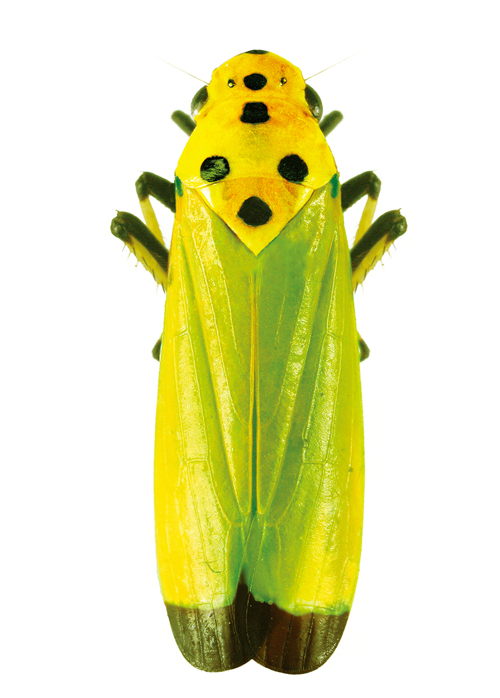
Name: 끝검은말매미충, Kkutgeomunmalmaemichung
Scientific name: Bothrogonia japonica Ishihara
Distribution: Korea, China, Japan
This leafhopper is about 11 to 14 millimeters long. It's relatively larger than other species from the same family. The body is a glossy yellow-green. The underside and basal part of the legs are black. The head is small, smaller than the prothorax, round and juts out a bit. It has a black dot in the middle of the forehead, on the face and between the eyes. The back of the prothorax is triangular and has three black dots. The edges of the front wings have a black stripe pattern.
Ecology: It can be observed between March and October in or around low mountains and grasslands. It inhabits plants and eats fruits and other plant products.
Trees
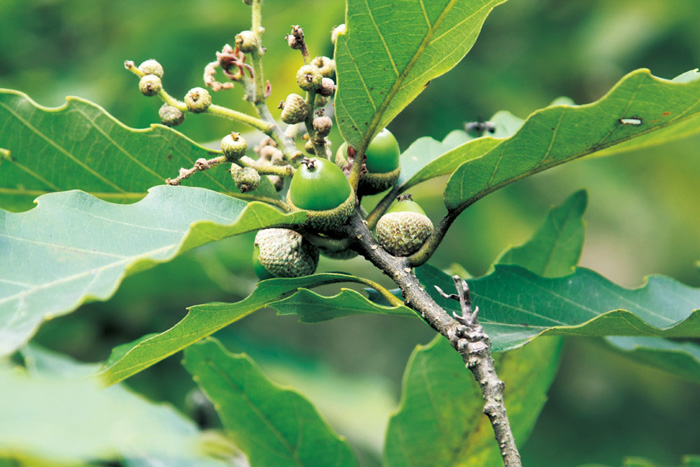
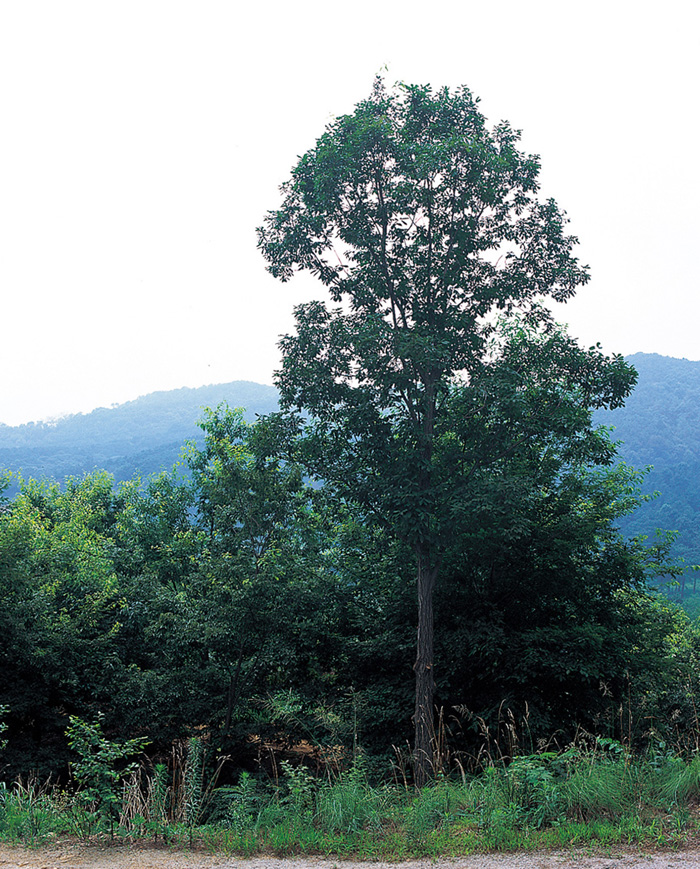
Name: 졸참나무, Jolchamnamu
Scientific name: Quercus serrata Thunb.
Type: deciduous broadleaf tree
Blooming season: April to May
Bearing season: September
Distribution: mountains nationwide
This mountain tree grows to 23 meters in height and can be up to 1 meter in diameter. The bark is gray. The leaves are alternating, ovate and lanceolate with some inward-facing saw tooth patterns. There are adpressed hairs that grow along the vein. The tree has an either monoecious or polygamous flower. The male flower has a drooping catkin under the axil of new branches while the female flower has an upright catkin above the branch. It bears an oval-shaped cone.
Mushrooms
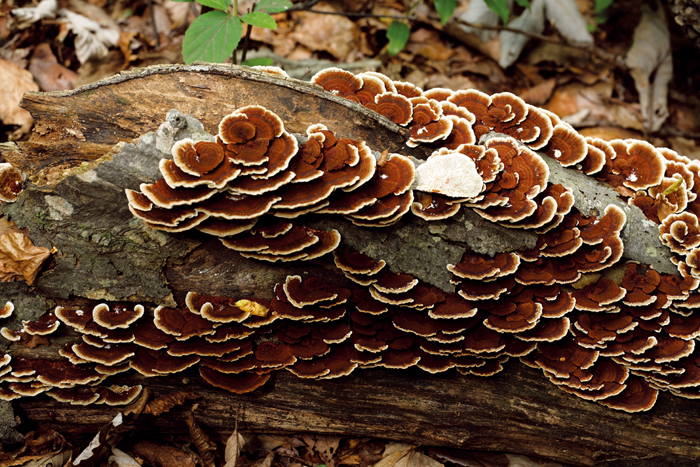
Name: 삼색도장버섯, Samsaekdojang beoseot
Scientific name: Daedaleopsis confragosa (Bolton) J. Schrot.
Type: saprophile spore
Print: white
Inedible
This mushroom grows in clusters from the stumps and branches of old fallen broadleaf trees. The cap is about 2 to 8 centimeters in high and from 1 to 4 centimeters in diameter. It's about 5 to 8 millimeters thick. The surface has a pattern that is either reddish brown, purplish brown or black brown, with radially arranged pleats. The tissue can be as thin as 1 to 2 millimeters. It's grayish white and coriaceous. The underside hymenium varies from grayish white to grayish brown.
Herbs & Flowers
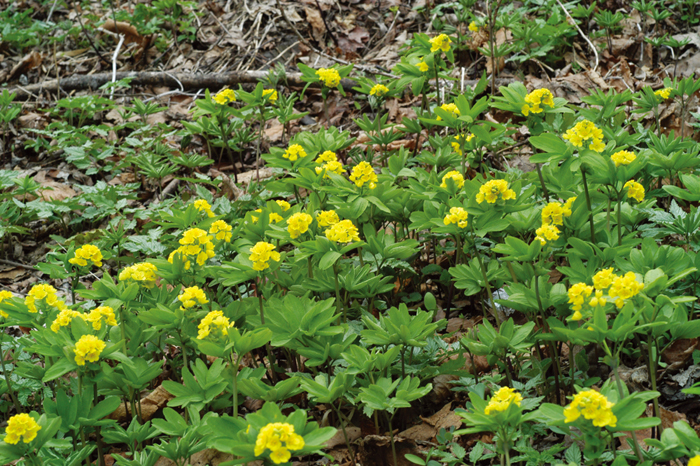
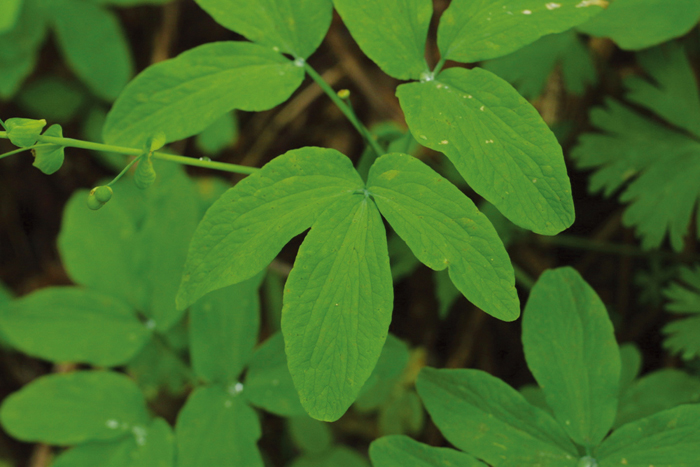
Name: 한계령풀, Hangyeryeongpul
Scientific name: Leontice microrrhyncha S. Moore
Full bloom: May
Distribution: Gangwon Province
This perennial herb grows to 30 to 40 centimeters tall in sunny places in the mountains. The leaves are pinnately compound or trifoliolate, oval-shaped and have a dull end. The stipule surrounds the branches. Yellow flowers bloom at the raceme at the end of the branch.
*This series of article about Korea’s insects, trees, mushrooms and herbs & flowers has been made possible through the cooperation of the Korea National Arboretum.
Korea.net publishes a series of articles, “Nature You Meet in the Mountains,” about the peninsula’s mushrooms, insects, trees and herbs & flowers.
Insects

Name: 끝검은말매미충, Kkutgeomunmalmaemichung
Scientific name: Bothrogonia japonica Ishihara
Distribution: Korea, China, Japan
This leafhopper is about 11 to 14 millimeters long. It's relatively larger than other species from the same family. The body is a glossy yellow-green. The underside and basal part of the legs are black. The head is small, smaller than the prothorax, round and juts out a bit. It has a black dot in the middle of the forehead, on the face and between the eyes. The back of the prothorax is triangular and has three black dots. The edges of the front wings have a black stripe pattern.
Ecology: It can be observed between March and October in or around low mountains and grasslands. It inhabits plants and eats fruits and other plant products.
Trees


Name: 졸참나무, Jolchamnamu
Scientific name: Quercus serrata Thunb.
Type: deciduous broadleaf tree
Blooming season: April to May
Bearing season: September
Distribution: mountains nationwide
This mountain tree grows to 23 meters in height and can be up to 1 meter in diameter. The bark is gray. The leaves are alternating, ovate and lanceolate with some inward-facing saw tooth patterns. There are adpressed hairs that grow along the vein. The tree has an either monoecious or polygamous flower. The male flower has a drooping catkin under the axil of new branches while the female flower has an upright catkin above the branch. It bears an oval-shaped cone.
Mushrooms

Name: 삼색도장버섯, Samsaekdojang beoseot
Scientific name: Daedaleopsis confragosa (Bolton) J. Schrot.
Type: saprophile spore
Print: white
Inedible
This mushroom grows in clusters from the stumps and branches of old fallen broadleaf trees. The cap is about 2 to 8 centimeters in high and from 1 to 4 centimeters in diameter. It's about 5 to 8 millimeters thick. The surface has a pattern that is either reddish brown, purplish brown or black brown, with radially arranged pleats. The tissue can be as thin as 1 to 2 millimeters. It's grayish white and coriaceous. The underside hymenium varies from grayish white to grayish brown.
Herbs & Flowers


Name: 한계령풀, Hangyeryeongpul
Scientific name: Leontice microrrhyncha S. Moore
Full bloom: May
Distribution: Gangwon Province
This perennial herb grows to 30 to 40 centimeters tall in sunny places in the mountains. The leaves are pinnately compound or trifoliolate, oval-shaped and have a dull end. The stipule surrounds the branches. Yellow flowers bloom at the raceme at the end of the branch.
*This series of article about Korea’s insects, trees, mushrooms and herbs & flowers has been made possible through the cooperation of the Korea National Arboretum.
Most popular
- China warmly welcomes first Korea-born giant panda Fu Bao
- First hearing-impaired K-pop act hopes for 'barrier-free world'
- Novelist Hwang's 'Mater 2-10' shortlisted for Int'l Booker Prize
- Expats could account for 7% of population in 20 years: report
- Nat'l Fire Agency picks 137 elite staff for deployment abroad













